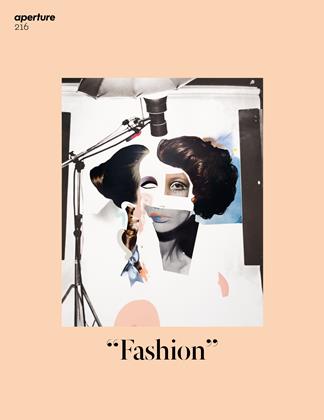Shiseido Magic
PICTURES
Jason Evans
Jason Evans is a photographer based in Ramsgate, England. He created numerous editorials and covers for Hanatsubaki (working with legendary art director Masayoshi Nakajo) between 2006 and 2012.
The images in these pages comprise a tiny selection of the extraordinary visual culture produced by Shiseido, the Japanese purveyor of beauty products. Founded as a pharmacy in Tokyo’s fashionable Ginza district in 1872 by Arinobu Fukuhara, and now the fourth largest cosmetics company in the world, Shiseido has always had a strong relationship with photography. Fukuhara’s sons published monographs of their own modernist-inspired work and established the Japan Photographic Society in 1924. Arinobu's grandson, Yoshiharu Fukuhara, is the director of the Tokyo Metropolitan Museum of Photography. Alongside the company’s innovative use of imagery, the design of their products, packaging, and retail outlets contributed to a seductive brand identity based on a "stateless, universal” ideal.
Shiseido is responsible for bringing many Western concepts to Japan, including toothpaste, ice cream, and carbonated drinks. They also opened the first free public art gallery, still in Ginza today, albeit in a smart, new tower. Their most important activity, though, was educating customers about overseas grooming trends and practices, which the company did through their corporate magazine Hanatsubaki, launched in 1937. Despite its primary purpose of cultivating demand for Shiseido products, the publication deserves to be ranked alongside other radical postwar titles, such as the German youth magazine twen or the British women’s magazine Nova, for its dizzying photographic layouts and challenging design.
Shiseido’s innovative, enigmatic visuals transformed their products into fetish objects; it was not enough simply to introduce the long-isolated Japanese public to foreign fancies. As with most applied photography, advertising work is often overlooked or disregarded as "commercial,” a disingenuous distinction that anyone who has visited a recent photo-art fair will contest. A look through the Shiseido archives reveals a tacit commentary on the powerful changes affecting Japanese society, particularly in the postwar years when Japan’s economy boomed. The company's marketing materials underscore how art directors, photographers, typographers, fashion designers, and makeup artists reconciled traditional values and aesthetics with twentieth-century sensibilities, resulting in the gorgeous hybrids that can make a visit to Japan so beguiling for outsiders.
For some Western observers, part of the intrigue of Japanese photography may stem from a lack of context, for we are often unable to read the copy on the ads, the titles of the books, or the names of the authors. That said, to ignore the machinations of product photography is to uncritically digest corporate promotional materials. Beautiful as these Shiseido ads may be, they were designed with the sole purpose of encouraging consumption. Yet unlike most of their Western counterparts, they did so not by reinforcing stereotypes and promoting existing ideals of beauty but by championing new trends through a tireless output of class-A eye candy.
The sophistication of these images often lies in a reconciliation of both new, European influences and local sensibilities. Consider the use of space and perspective, which could be seen in relation to traditional Japanese woodcut illustration. Flat colors abound while textures lack specific detail.
Facial expressions feel mimed and frozen. Objects become magic talismans in oblique narratives divorced from any sense of realism. A floating dream world beckons.
 View Full Issue
View Full Issue
More From This Issue
-
 Pictures
PicturesThe Icons
Fall 2014 By Inez & Vinoodh -
 Pictures
PicturesI-D, Jill, And The Face
Fall 2014 By Phil Bicker -
 Aperture
ApertureEd Van Der Elsken
Fall 2014 By Tamara Berghmans -
 Words
WordsState Of Fashion
Fall 2014 By Charlotte Cotton -

Inez & Vinoodh: The Art Of Transformation
Fall 2014 By Donatien Grau -
 Words
WordsFashion Film & The Photographic
Fall 2014 By Marketa Uhlirova
Subscribers can unlock every article Aperture has ever published Subscribe Now
Jason Evans
-
 Mixing The Media
Mixing The MediaHanatsubaki Perfection Is Lifeless
Fall 2008 By Jason Evans -
 Theme And Variations
Theme And VariationsThe Artist Formerly Known As Fashion Photography
Summer 2009 By Jason Evans -
 Reviews
ReviewsVan Lamsweerde & Matadin: Pretty Much Everything
Spring 2011 By Jason Evans -
 Work And Process
Work And ProcessHelen Sear Looking At Looking
Summer 2011 By Jason Evans
Pictures
-
 Pictures
PicturesProtest. For A Better Life This Side Of Heaven.
Winter 2019 -
 Pictures
PicturesBuffalo Gregory Halpern
Spring 2017 By Brian Sholis -
 Pictures
PicturesTrevor Paglen Landing Site
Spring 2016 By Brian Wallis -
 Pictures
PicturesGillian Wearing
Winter 2016 By Jennifer Blessing -
 Pictures
PicturesThe Third Gender
Winter 2017 By Nick Sethi, Jyoti Dhar -
 Pictures
PicturesClaudia Andujar
Summer 2014 By Thyago Nogueira








